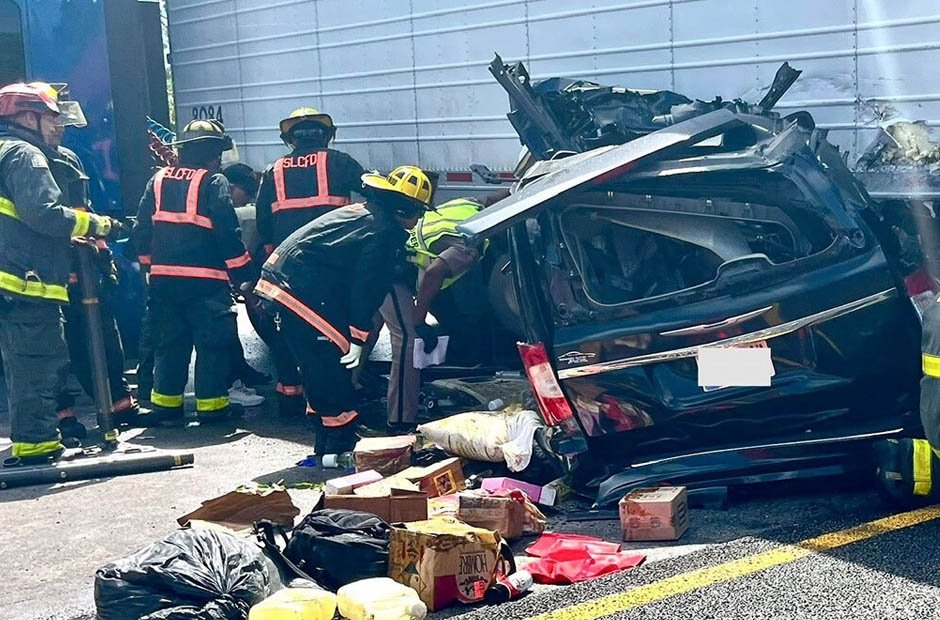Nobody expects a regular drive to end in tragedy. But every year, thousands of families across Texas get that phone call, the one that changes everything. A car accident that seemed survivable wasn’t. Someone didn’t make it. And suddenly, there’s this impossible mix of grief, shock, and questions nobody wants to be asking.
The thing is, fatal car accidents don’t just happen because of bad luck. There’s almost always someone at fault, someone whose negligence or recklessness caused the crash. And while nothing can bring back the person you lost, the legal system does recognize that families deserve answers, accountability, and compensation for what they’re going through.
What Makes a Car Accident a Wrongful Death Case
Not every fatal accident automatically becomes a wrongful death case, though most people assume they do. The key factor is negligence. Someone has to have done something wrong, or failed to do something they should have done, that directly caused the crash.
Here’s where it gets specific. Running a red light, driving drunk, texting while driving, speeding through a school zone… these are clear examples of negligence. But it can also be more subtle. A driver who didn’t maintain their brakes properly, a company that put an overworked employee behind the wheel, even a municipality that failed to fix a dangerous intersection after multiple complaints.
The legal standard is whether the at-fault party had a duty to drive safely, whether they breached that duty, and whether that breach caused the death. Sounds simple when you lay it out like that, but proving each piece takes serious work.
Who Can Actually File These Claims
Texas law is pretty specific about who has the right to file a wrongful death lawsuit. It’s not just anyone who knew or cared about the deceased. The surviving spouse can file. The children can file. The parents can file if there’s no spouse or children. That’s basically it.
There’s also something called a survival action, which is different but related. This represents the deceased person’s own claim for what they went through between the accident and death. If someone survived for hours or days after the crash before passing away, their estate can pursue compensation for their pain and suffering during that time. A wrongful death lawyer typically handles both the wrongful death claim and any survival action together, since they’re so closely connected.
What catches people off guard is that you can’t just have one family member file and assume everyone’s covered. The law requires all eligible family members to be part of the claim, or at least given the opportunity to join. This prevents multiple lawsuits over the same death, but it also means families need to work together during an already difficult time.
The Timeline Problem Most Families Don’t See Coming
Texas gives you two years from the date of death to file a wrongful death lawsuit. Two years might sound like plenty of time when you’re in the middle of grief and funeral arrangements. It’s not.
Here’s what actually happens. The first few months are just survival mode, getting through each day. Then there’s settling the estate, dealing with insurance companies (who are definitely not on your side), and trying to figure out what your legal options even are. Before you know it, a year has passed. Then 18 months. And if you haven’t filed by that two-year mark, your right to compensation is gone. Doesn’t matter how strong your case is.
The problem is that building a strong wrongful death case takes time. Car accident attorneys need to gather accident reports, medical records, witness statements, and expert opinions. They need to calculate the full economic impact of the loss. All of this requires months of work before a lawsuit can even be filed properly.
What Actually Gets Investigated
When someone dies in a car crash, there’s always an official investigation, but police reports only tell part of the story. They document the obvious stuff like road conditions, vehicle positions, and whether anyone was cited at the scene. What they don’t always capture is the full picture of why the accident happened.
Attorneys dig deeper. They’re looking at cell phone records to prove distracted driving. They’re getting employment records if a commercial driver was involved. They’re hiring accident reconstruction experts to show exactly how the collision occurred and who had the last clear chance to avoid it.
Sometimes the investigation reveals multiple parties share fault. The drunk driver who crossed the center line, sure, but also the bar that kept serving them when they were clearly intoxicated. Or the driver who ran the red light, plus the city that had removed the “Signal Ahead” warning sign six months earlier and never replaced it. Texas follows a modified comparative negligence rule, which means even if the deceased person was partially at fault, families can still recover compensation as long as the deceased wasn’t more than 50% responsible.
The Money Conversation Nobody Wants to Have
Talking about compensation after losing someone feels wrong. Like you’re putting a price tag on a human life. But the reality is that sudden death creates immediate financial crisis on top of emotional devastation.
There are the obvious costs first. Funeral and burial expenses hit right away, often running $10,000 or more. Then there’s the lost income, not just from today but from all the years that person would have continued working and providing for the family. If the deceased was the primary breadwinner, this can mean hundreds of thousands or even millions of dollars in lost financial support.
But it goes beyond money. Wrongful death compensation in Texas also includes loss of companionship, loss of guidance and counsel, and the mental anguish of losing someone you loved. These aren’t easy to put dollar figures on, which is exactly why insurance companies try to minimize them.
Most people don’t realize that the first settlement offer from an insurance company is almost never fair. It’s a starting point in a negotiation, and it’s usually designed to get grieving families to accept less than their case is actually worth. The insurance adjuster sounds sympathetic on the phone, but their job is to protect the company’s bottom line, not to make sure your family is taken care of.
What Families Get Wrong About These Cases
The biggest misconception is that wrongful death cases are quick. They’re not. Most take a year or more to resolve, and some go on for several years if they end up in trial. That doesn’t mean families wait years to see any money (attorneys can sometimes negotiate interim payments), but it does mean this becomes a long process during an already difficult time.
Another thing families miss is that these cases are public. Once a lawsuit is filed, it becomes part of the court record. The details of the accident, the family’s financial situation, even personal information about the deceased all become accessible. For some families, this feels invasive. For others, it’s part of getting public accountability for what happened.
There’s also this assumption that if the other driver was arrested or convicted of a crime, the civil case is automatic. Criminal and civil cases are actually separate, with different standards of proof. A criminal conviction helps a civil case, but it’s not required. And sometimes criminal charges are never filed even when civil liability is clear.
Moving Forward When Nothing Feels Normal
The legal process can’t fix what happened. It can’t bring anyone back or make the grief go away. What it can do is provide some measure of accountability and financial stability during an impossible time.
Every fatal accident case is different because every family’s loss is unique. But the common thread is that families deserve answers about what happened, accountability from whoever was responsible, and resources to help them rebuild their lives. The legal system isn’t perfect, but it’s one of the few tools available when tragedy strikes on the road.



